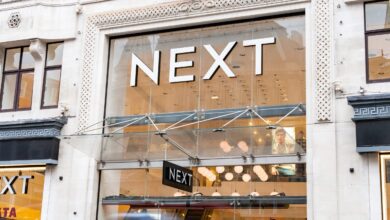A look-back at the first half of 2018 in retail

Register to get 1 free article
Reveal the article below by registering for our email newsletter.
Want unlimited access? View Plans
Already have an account? Sign in
Over the past six months, we’ve seen high street stalwarts such as M&S, New Look, and most recently House of Fraser announce significant structural changes. A number of big-name retailers have fallen into administration, succumbing to the pressure of changing consumer spending and shopping habits.
These retail struggles come against a backdrop of general decline in bricks-and-mortar retailing, as supermarket chains, bank branches and everyone else on our high streets wrestles with rising cost pressures and fight to remain relevant to modern consumers. The start of this year saw a significant decline in store footfall – the lowest since the recession in 2009. A particularly balmy early summer and royal wedding fever has given the high street a much-needed boost in recent months. Now retailers must look to not just regain but also retain this momentum. In order to survive on the high street, the retail industry needs to take a fresh look at existing industry practices.
It’s Not All Doom and Gloom
Retailers are having to fight harder than ever to secure consumers’ loyalty. This fall in spending is putting the spotlight on outdated internal processes and inefficiencies at all points in the value chain. The sector is ripe for modernisation, and for forward-looking retailers willing to embrace data and leverage insights from their businesses, there is a huge opportunity to future-proof their presence the high street.
A key area of opportunity is better understanding and responding to consumer demand. By investing in tools that accurately forecast business demands using personalised algorithms, retailers can uncover patterns that previously went unnoticed. These insights can be used to address operational inefficiencies and dramatically improve labour spend.
Looking to the Future
Moving forward, retailers need to re-examine their day to day operations. We know that data holds the key to meaningful transformation across the sector, but what’s also important to consider is where it can have the greatest impact. There is huge potential in often overlooked but crucial operational activities such as staff scheduling.
We have found almost half of retailers have received customer complaints as a result of incorrectly predicting the number of staff needed in store on any given day. In order to attract consumers back to the high street, retailers need to provide a seamless in-store customer experience. A big part of this experience is ensuring that customers are met by the right person at the right time in the right place to meet their needs. A lack of staff shop-floor presence and long queues for tills and fitting rooms frustrate consumers and push them straight into the internet giants’ open arms.
Imagine the impact on in-store sales if retailers could solve this problem. Data driven approaches to scheduling have the power radically transform the shop-floor, underpinning a retailer’s success. It empowers everyone from head office through to shift manager and shop staff to interact with scheduling to ensure both customer demand and staff wellbeing and working preferences are prioritised. This will ultimately result in more efficient operations and a better in-store experience for everyone – customers and staff.
Examining and deploying smarter technologies will be crucial for delivering more concrete results going forward. Ultimately, to survive and thrive in today’s tough trading conditions retailers must focus on solving back office inefficiencies – and make the most of the resources they already have. This smart approach to the latter part of 2018 will hopefully revive some ailing retailers and set them up for a successful and prosperous 2019 and beyond.
By Ciara McKibbin a customer success manager at Rotageek, which uses predictive data-driven technologies to effectively and fairly schedule staff and work with retailers







